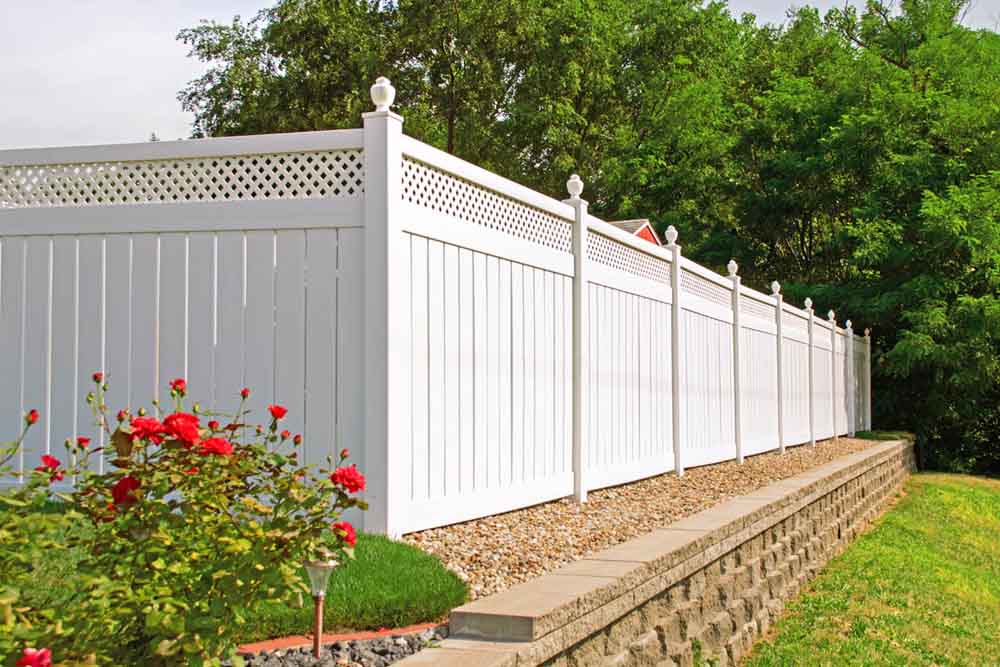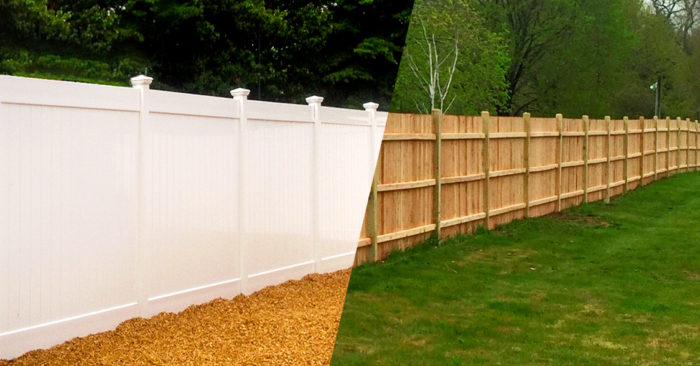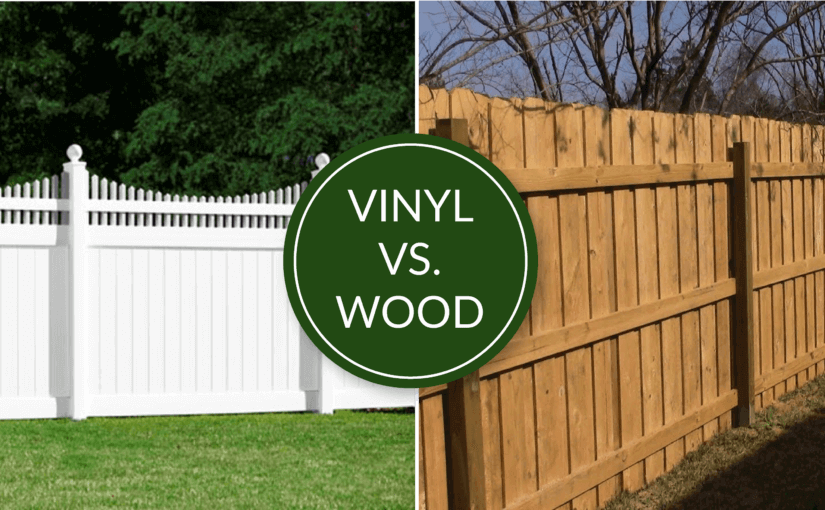Vinyl Fencing vs Wood Fencing: A Detailed Comparison
Exploring the differences between vinyl fencing and wood fencing, this article delves into the various aspects of each type to help you make an informed decision for your property.
From durability to cost considerations, installation, maintenance, aesthetics, and customization options, we cover it all to provide a comprehensive guide on choosing the right fencing material for your needs.
Vinyl Fencing
Vinyl fencing offers several benefits over traditional wood fencing. One of the main advantages is that vinyl fencing requires minimal maintenance compared to wood fencing. Vinyl does not need to be painted or stained, saving you time and money in the long run.
Additionally, vinyl fencing is resistant to rot, decay, and pests, making it a durable option for outdoor use.
Design Options
When it comes to design, vinyl fencing offers a wide range of options to choose from. Some popular designs include privacy fences, picket fences, ranch rail fences, and ornamental fences. These designs come in various colors and styles, allowing you to customize your fence to suit your preferences and complement your property's aesthetics.
Durability Comparison
In terms of durability, vinyl fencing outperforms wood fencing. Vinyl is known for its strength and resilience, making it a long-lasting fencing option. Unlike wood, vinyl does not warp, crack, or splinter over time, ensuring that your fence will maintain its appearance and structural integrity for years to come.
This durability factor also contributes to the cost-effectiveness of vinyl fencing, as it requires fewer repairs and replacements compared to wood fencing.
Wood Fencing

Wood fencing holds a timeless appeal that adds a classic and natural look to any property. The warmth and charm of wood can complement various architectural styles, making it a popular choice for many homeowners.
Traditional Appeal
Wood fencing is known for its traditional and rustic appearance, providing a sense of privacy and security while enhancing the overall aesthetics of a property. The natural grains and textures of wood can create a warm and inviting atmosphere, making it a popular choice for those seeking a more traditional look for their homes.
Maintenance Requirements
Wood fencing requires regular maintenance to keep it in top condition. This includes staining or painting every few years to protect the wood from rot, warping, and insect damage. Additionally, wood fences may need to be sealed or treated to prevent moisture absorption, which can lead to decay over time.
Regular inspections and repairs are necessary to ensure the longevity of wood fencing.
Environmental Impact
Using wood for fencing purposes can have an environmental impact, as it involves the harvesting of trees. While wood is a renewable resource, deforestation and unsustainable logging practices can have detrimental effects on ecosystems and biodiversity. Opting for sustainably sourced wood or alternative materials can help reduce the environmental impact of using wood fencing.
Cost Considerations

When it comes to choosing between vinyl fencing and wood fencing, cost is a significant factor to consider. Let's break down the initial and long-term cost implications of each type of fencing, as well as any cost-saving measures associated with vinyl or wood fencing.
Initial Cost Comparison
- Vinyl fencing typically has a higher upfront cost compared to wood fencing. The cost of materials and installation for vinyl fencing can be more expensive initially.
- Wood fencing, on the other hand, tends to be more budget-friendly in terms of initial costs. The materials for wood fencing are generally cheaper than vinyl.
Long-term Cost Implications
- While vinyl fencing may have a higher initial cost, it is known for being low maintenance. Vinyl fences do not require painting, staining, or sealing like wood fences do, which can lead to long-term cost savings.
- Wood fencing, although cheaper upfront, may require more maintenance over time. This includes regular painting, staining, and repairs due to rotting or warping, which can add up in terms of maintenance costs.
Cost-saving Measures
- One cost-saving measure associated with vinyl fencing is its durability and low maintenance requirements. This can help save money on maintenance and repair costs over the lifespan of the fence.
- For wood fencing, one way to save costs is by using pressure-treated wood that is resistant to rot and decay. This can prolong the lifespan of the fence and reduce the need for frequent repairs or replacements.
Installation and Maintenance

When it comes to installing vinyl fencing, the process is relatively straightforward. The panels are typically pre-assembled, making it easier for installation. The posts are first set into the ground and then the panels are attached to the posts. This can be a DIY project for those with some experience, or it can be done by professionals for a quicker and more precise installation.
Installation Process for Vinyl Fencing
- Set the posts in the ground at the desired intervals.
- Attach the panels to the posts using brackets or screws.
- Ensure everything is level and secure.
- Finish off with post caps for a polished look.
Maintenance for Vinyl Fencing
Vinyl fencing is known for being low-maintenance compared to wood fencing. It typically only requires occasional cleaning with soap and water to remove dirt or mildew. There is no need for staining, painting, or sealing, making it a hassle-free option for homeowners.
Comparison with Wood Fencing
Wood fencing, on the other hand, requires more maintenance compared to vinyl fencing. Wood fences need to be regularly stained or painted to protect the wood from rot, insects, and weather damage. Additionally, wood fences may need repairs or replacement of boards over time, adding to the maintenance costs.
Aesthetics and Customization
When it comes to choosing between vinyl fencing and wood fencing, aesthetics and customization play a significant role in the decision-making process. Let's explore the visual aspects of both options to help you make an informed choice.
Vinyl Fencing Aesthetic Options
Vinyl fencing offers a wide range of aesthetic options to suit different preferences and styles. You can choose from various colors, textures, and designs, including options that mimic the look of traditional wood or ornamental iron fencing. Whether you prefer a classic white picket fence or a modern privacy fence, vinyl can provide a clean and polished appearance that complements your property.
Wood Fencing Customization Possibilities
Wood fencing is highly customizable, allowing you to create a unique and personalized look for your outdoor space. With wood, you have the flexibility to choose the type of wood, stain or paint color, and design details such as lattice tops or decorative post caps.
Whether you opt for cedar, pine, or redwood, wood fencing can be tailored to match your home's architectural style and landscaping.
Overall Look and Feel Comparison
When comparing the overall look and feel of vinyl versus wood fencing, it ultimately comes down to personal preference and the desired aesthetic for your property. Vinyl fencing tends to have a more uniform and modern appearance, ideal for contemporary homes or those looking for low-maintenance options.
On the other hand, wood fencing exudes a natural and timeless charm, adding warmth and character to your outdoor space. The choice between vinyl and wood fencing will depend on your aesthetic preferences, maintenance considerations, and budget constraints.
Conclusive Thoughts
In conclusion, weighing the pros and cons of vinyl fencing versus wood fencing is essential in determining which option aligns best with your preferences and requirements. Whether you prioritize longevity, maintenance, or visual appeal, understanding the differences between these two materials is key to making the right choice for your property.